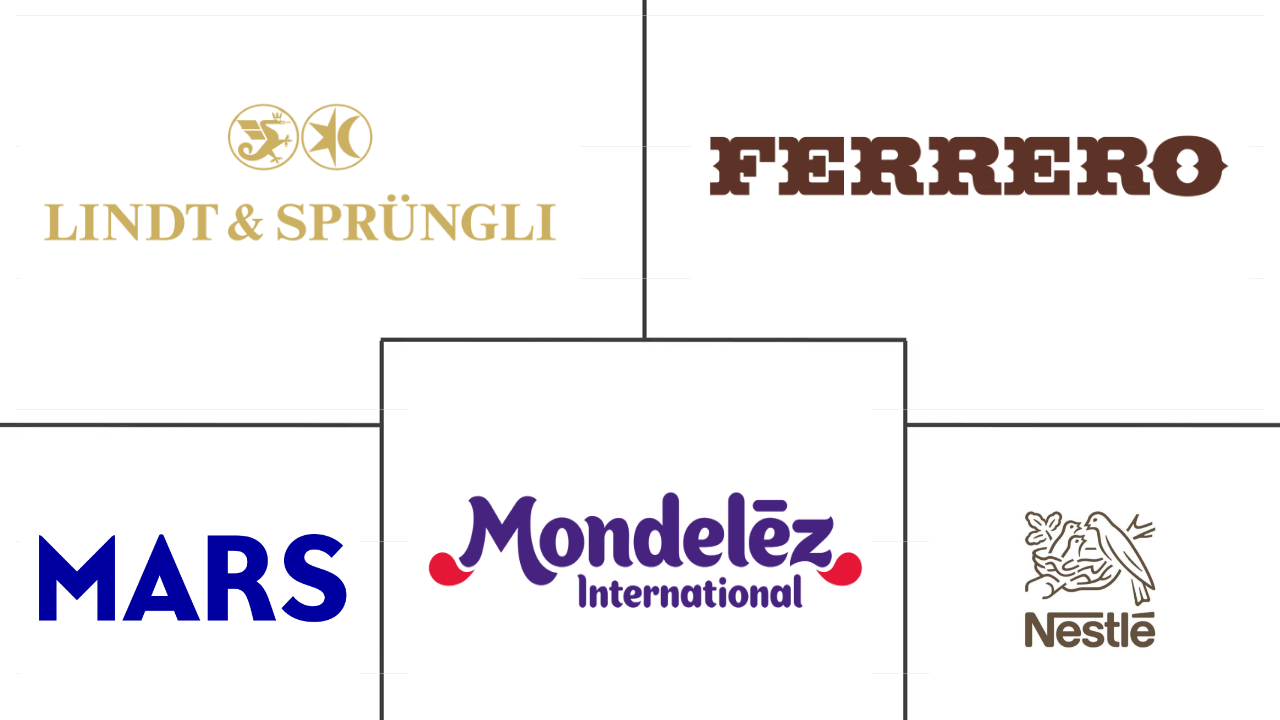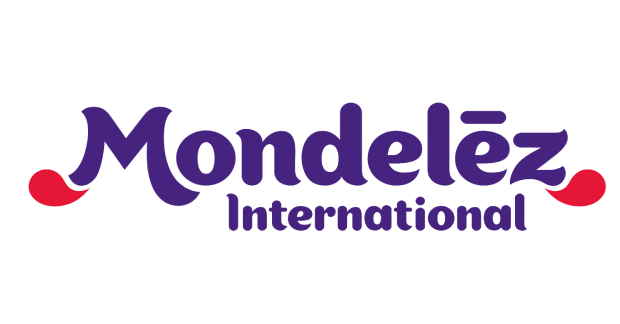Market Size of uk chocolate Industry
| Icons | Lable | Value |
|---|---|---|
|
|
Study Period | 2018 - 2030 |
|
|
Market Size (2024) | USD 11.84 Billion |
|
|
Market Size (2030) | USD 16.20 Billion |
|
|
Largest Share by Distribution Channel | Convenience Store |
|
|
CAGR (2024 - 2030) | 5.37 % |
|
|
Fastest Growing by Distribution Channel | Online Retail Store |
|
|
Market Concentration | Medium |
Major Players |
||

|
||
|
*Disclaimer: Major Players sorted in no particular order |
UK Chocolate Market Analysis
The UK Chocolate Market size is estimated at 11.84 billion USD in 2024, and is expected to reach 16.20 billion USD by 2030, growing at a CAGR of 5.37% during the forecast period (2024-2030).
11.84 Billion
Market Size in 2024 (USD)
16.20 Billion
Market Size in 2030 (USD)
5.10 %
CAGR (2018-2023)
5.37 %
CAGR (2024-2030)
Largest Segment by Confectionery Variant
75.54 %
value share, Milk and White Chocolate, 2023
The innovative flavor offerings possible in White chocolate, followed by the preference for varied taste profiles in the country, are anticipated to drive segmental growth.
Largest Segment by Distribution Channel
39.82 %
value share, Convenience Store, 2023
The feasible locations of convenience stores allow consumers to shop within minimal distances with wider chocolate product availability, making it a major market segment.
Fastest-growing Segment by Confectionery variant
6.05 %
Projected CAGR, Dark Chocolate, 2024-2030
Rising awareness among consumers toward the nutritional content and stress-relieving ability of dark chocolate is anticipated to drive the demand in the country.
Fastest-growing Segment by Distribution Channel
6.31 %
Projected CAGR, Online Retail Store, 2024-2030
The increased adoption of e-commerce platforms among consumers and the growing presence of online retailers are anticipated to drive the segment in the forecast period.
Leading Market Player
20.98 %
market share, Mondelēz International Inc., 2022

An extensive range of product offerings and the company's main focus on taste and nutritional profiles based on consumer preferences support Mondelēz in the market studied.
Broader reach and easy access to multiple brands drove chocolate sales in the United Kingdom, with Supermarket/hypermarkets and convenience stores making almost 80% of market share in 2023
- Supermarkets/hypermarkets have always maintained a strong lead in confectionery sales in the region. Chocolate is a largely sold confection through supermarkets and hypermarkets, with a market volume share of 50.89% in 2022. Strategic product positioning on dedicated shelves for the confectionery category influences impulse purchase behavior among potential consumers. Casino Supermarkets, Aldi, Super U, and Lidl are some of the leading grocery store operators in the region. A nationwide network of these operators allows easy access to local and mainstream confectionery brands. As of 2023, Lidl operates more than 1500 stores in the United Kingdom. Sainsbury operates around 2,869 supermarkets across the country.
- Convenience stores are the second most widely preferred distribution channel for chocolate purchases after supermarkets and hypermarkets. The volume of sales of chocolates through convenience stores is estimated to register 38.96% volume share in 2024. Broader reach and easy access to private-label brands drive consumer preference for traditional grocery stores over other retail channels. Dark chocolate sales are estimated to grow at the highest CAGR through convenience stores, reaching a sales value of USD 161.98 million in 2030.
- The online channel is projected to be the fastest-growing distribution channel for chocolates, with an anticipated CAGR of 6.13% in value during the forecast period. The increasing number of internet users influences the evolving role of online channels in grocery purchases. In 2021, 88% of UK consumers aged 16 to 74 bought online goods or services for personal use.
UK Chocolate Industry Segmentation
Dark Chocolate, Milk and White Chocolate are covered as segments by Confectionery Variant. Convenience Store, Online Retail Store, Supermarket/Hypermarket, Others are covered as segments by Distribution Channel.
- Supermarkets/hypermarkets have always maintained a strong lead in confectionery sales in the region. Chocolate is a largely sold confection through supermarkets and hypermarkets, with a market volume share of 50.89% in 2022. Strategic product positioning on dedicated shelves for the confectionery category influences impulse purchase behavior among potential consumers. Casino Supermarkets, Aldi, Super U, and Lidl are some of the leading grocery store operators in the region. A nationwide network of these operators allows easy access to local and mainstream confectionery brands. As of 2023, Lidl operates more than 1500 stores in the United Kingdom. Sainsbury operates around 2,869 supermarkets across the country.
- Convenience stores are the second most widely preferred distribution channel for chocolate purchases after supermarkets and hypermarkets. The volume of sales of chocolates through convenience stores is estimated to register 38.96% volume share in 2024. Broader reach and easy access to private-label brands drive consumer preference for traditional grocery stores over other retail channels. Dark chocolate sales are estimated to grow at the highest CAGR through convenience stores, reaching a sales value of USD 161.98 million in 2030.
- The online channel is projected to be the fastest-growing distribution channel for chocolates, with an anticipated CAGR of 6.13% in value during the forecast period. The increasing number of internet users influences the evolving role of online channels in grocery purchases. In 2021, 88% of UK consumers aged 16 to 74 bought online goods or services for personal use.
| Confectionery Variant | |
| Dark Chocolate | |
| Milk and White Chocolate |
| Distribution Channel | |
| Convenience Store | |
| Online Retail Store | |
| Supermarket/Hypermarket | |
| Others |
UK Chocolate Market Size Summary
The UK chocolate market is experiencing a robust growth trajectory, driven by a strong consumer affinity for chocolate and a well-established distribution network. Supermarkets and hypermarkets dominate the market, accounting for a significant portion of chocolate sales, with strategic product placements enhancing impulse purchases. Convenience stores also play a crucial role, offering easy access to private-label brands that appeal to consumers. The online channel is emerging as the fastest-growing distribution avenue, reflecting the increasing number of internet users and their shift towards online grocery shopping. The market is characterized by a diverse range of chocolate products, with consumer preferences leaning towards innovative flavors and health-conscious options like dark and milk chocolate.
The market landscape is moderately consolidated, with major players such as Lindt & Sprüngli, Ferrero, Mars, Mondelēz, and Nestlé holding substantial market shares. Pricing strategies significantly influence consumer buying behavior, with a wide range of chocolate products available at various price points. The introduction of new products and innovations, such as Barry Callebaut's second-generation chocolate and Whitakers Chocolates' enhanced production capabilities, underscores the dynamic nature of the market. The UK's position as a leading chocolate consumer globally highlights the enduring popularity and cultural significance of chocolate in the region.
UK Chocolate Market Size - Table of Contents
-
1. MARKET SEGMENTATION (includes market size in Value in USD and Volume, Forecasts up to 2030 and analysis of growth prospects)
-
1.1 Confectionery Variant
-
1.1.1 Dark Chocolate
-
1.1.2 Milk and White Chocolate
-
-
1.2 Distribution Channel
-
1.2.1 Convenience Store
-
1.2.2 Online Retail Store
-
1.2.3 Supermarket/Hypermarket
-
1.2.4 Others
-
-
UK Chocolate Market Size FAQs
How big is the UK Chocolate Market?
The UK Chocolate Market size is expected to reach USD 11.84 billion in 2024 and grow at a CAGR of 5.37% to reach USD 16.20 billion by 2030.
What is the current UK Chocolate Market size?
In 2024, the UK Chocolate Market size is expected to reach USD 11.84 billion.

